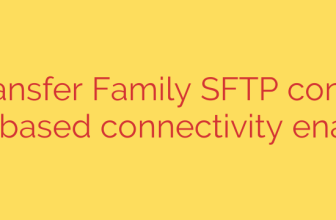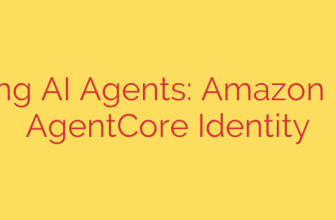
Supercharge Your High-Performance Computing with Hybrid Cloud Bursting on Google Cloud
In today’s data-driven world, industries from financial services to scientific research rely on high-performance computing (HPC) to run complex simulations, analyze massive datasets, and drive innovation. However, managing the immense computational demands of these workloads presents a significant challenge. Organizations often face a difficult choice: invest heavily in on-premise infrastructure that sits idle during off-peak hours, or risk not having enough capacity when demand surges.
Fortunately, a powerful hybrid cloud strategy offers a solution: cloud bursting. This approach allows you to seamlessly extend your on-premise computing grid to the public cloud, giving you the best of both worlds—the security of your private infrastructure and the limitless scale of the cloud.
The Challenge of Peak HPC Demands
HPC workloads are rarely consistent. A financial firm might need to run intensive risk analysis at the close of the market, a research institution may require massive power for a specific experiment, or an engineering company could need to render a complex 3D model overnight.
These “bursty” workloads create an infrastructure dilemma. Provisioning for peak demand is incredibly expensive and inefficient, leading to low utilization rates for costly hardware. Under-provisioning, on the other hand, creates bottlenecks, delays critical projects, and puts a cap on innovation. The ideal solution is an environment that can dynamically scale resources up and down based on real-time needs.
What is Cloud Bursting? The Best of Both Worlds
Cloud bursting is a hybrid cloud deployment model where an application runs in a private, on-premise environment but “bursts” into a public cloud like Google Cloud when the demand for computing capacity spikes.
This model is transformative for HPC and analytics. Instead of buying more servers, you can configure your workload manager to automatically provision virtual machines (VMs) in the cloud to handle the overflow. Once the peak workload is complete, these cloud resources are automatically terminated, ensuring you only pay for the exact resources you use.
The primary benefits include:
- On-Demand Scalability: Access virtually limitless computing power from Google Cloud precisely when you need it, without any manual intervention.
- Significant Cost Savings: Avoid massive capital expenditures on hardware that you may only need a fraction of the time. Shift your spending to a flexible, operational pay-as-you-go model.
- Increased Business Agility: Respond to new opportunities and computational challenges instantly, without waiting for hardware procurement and setup cycles.
How Open-Source Connectors Power Hybrid HPC
The magic behind this seamless integration lies in specialized connectors. These software components act as a bridge between your on-premise workload management software and the cloud provider’s APIs.
Historically, these connectors were often proprietary, locking you into a specific vendor’s ecosystem. Today, the landscape is changing. The availability of enterprise-ready, open-source connectors for platforms like Google Cloud is a game-changer.
Here’s how the process typically works:
- Your on-premise grid manager detects a surge in workload that exceeds local capacity.
- The connector automatically makes API calls to Google Cloud to provision pre-configured Compute Engine (GCE) VMs.
- These new cloud nodes seamlessly join your existing grid, ready to accept and process tasks.
- As the workload subsides, the connector intelligently terminates the cloud VMs to stop incurring costs.
The move to open-source is critical because it provides unprecedented flexibility, transparency, and control. Your teams can now inspect, customize, and enhance the connector code to perfectly match your organization’s specific security protocols and workflow requirements, effectively eliminating vendor lock-in.
Essential Security Best Practices for Hybrid Cloud
While cloud bursting offers incredible power, it must be implemented with a strong focus on security. Extending your private network to the public cloud requires careful planning to protect sensitive data and maintain compliance.
Here are some actionable security tips to follow:
- Implement the Principle of Least Privilege: Use Google Cloud’s Identity and Access Management (IAM) to create highly specific service accounts for your connectors. Grant these accounts only the exact permissions needed to provision and terminate VMs, and nothing more.
- Secure Your Credentials: Never hardcode secret keys or credentials in your scripts or configuration files. Leverage secure, managed services for credential storage and rotation.
- Establish Secure Networking: Configure your Virtual Private Cloud (VPC), firewalls, and network routes to ensure that communication between your on-premise environment and Google Cloud is encrypted and restricted only to necessary traffic.
- Enable Comprehensive Auditing: Use tools like Cloud Audit Logs to maintain a detailed record of all API calls and resource changes made by the connector. This provides crucial visibility for security monitoring and troubleshooting.
By embracing a hybrid cloud bursting model powered by open-source technology, organizations can finally solve the HPC capacity dilemma. This approach delivers the performance and scale needed to tackle the most demanding computational tasks while maintaining financial efficiency and operational agility.
Source: https://cloud.google.com/blog/topics/hpc/announcing-new-ibm-spectrum-symphony-hostfactory-connectors/








